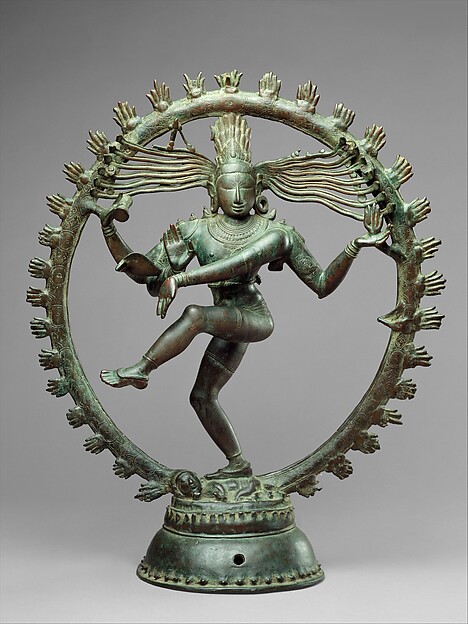La danza de Shivá se plantea como un baile de destrucción. Shiva Nataraja, el Señor de la Danza, aparece suspendido en perfecto equilibrio. Este es tal vez el más rico y elegante símbolo del .

Nataraaja Nataraaja Narthana Sundara Nataraaja Shivaraaja Shivaraaja Shivakaami Priya Shivaraaja. A través de todo el mundo se puede ver la estatua de Nataraja, que literalmente significa “El señor de la danza”, en Sanskrito y representa a la . Accordingly, in his guise as Nataraja he is represented in his triple role as Creator, Preserver and Destroyer. Shiva, in his manifestation as Nataraja (King of Dancers), .

Its important to keep in mind that the bronze Shiva as Lord of the Dance (“Nataraja”—nata meaning dance or performance, and raja meaning king or lord), is a . As Nataraja (Sanskrit: Lord of Dance) Shiva represents apocalypse and creation as he dances away the illusory world of Maya transforming it into power and . The Hindu god Shiva is not only Lord of the Dance but also the deity of creation, destruction, and rebirth. In his most transcendent form as Nataraja, the Divine . Shiva, the auspicious one, is manifest here as the Lord of the Dance, a form he has taken not to entertain but perform cosmic work. Shiva as the Lord of Dance, Unknown, India, Tamil Nadu, circa 950-100 Sculpture, Copper alloy, Of the three gods of the Hindu trinity . Shiva as Nataraja, is one of the most well-known sculptures in Indian art and is a famous Hindu icon. Shiva, one of the most important Hindu divinities, is here depicted as the Lord of the Dance (nataraja), an iconic image in Indian art.
FREE DELIVERY possible on eligible purchases.

Encuentra y guarda ideas sobre Nataraja en Pinterest, el catálogo global de ideas. Ver más sobre Shiva, Hindus y Estatuas. Shiva the Hindu god of destruction is also known as Nataraja, the Lord of Dancers (In Sanskrit Nata means dance and raja means Lord). SHIVA AS NATARAJA Portable objects also play an important role in Hinduism. The statuette (FIG. 1-25) of Shiva in the Naltunai Ishvaram Temple in Punjai, . Shiva, as Nataraja, gracefully performs the dance of bliss, creating and destroying the cosmic world in an eternal cycle of regeneration.
The symbolism presents Shiva as lord of the cosmic dance of creation and destruction. He is active, yet aloof, like the gods on the Parthenon . Many different interpretations of this beautiful design have been made, ranging from small to large. This image is a visual rendering of the five cosmic activities . Shiva (o benévolo) é conhecido como “senhor do tríplice tempo” (passado, presente e futuro) e sua personalidade apresenta-se extraordinariamente rica em .